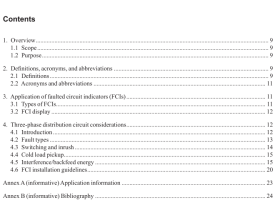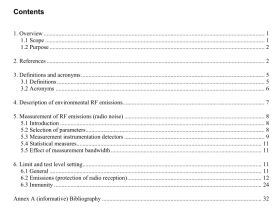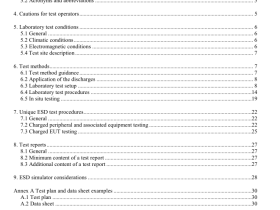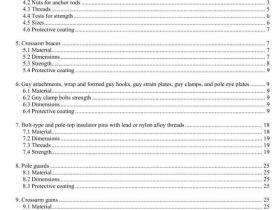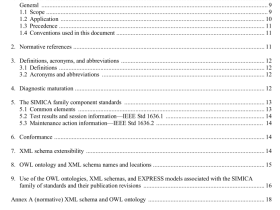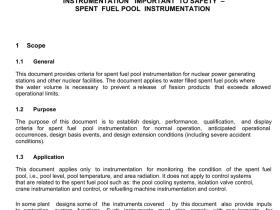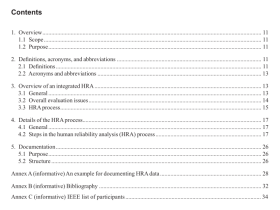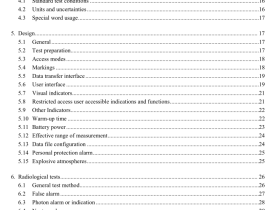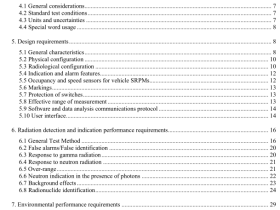IEEE Std 2771 pdf download
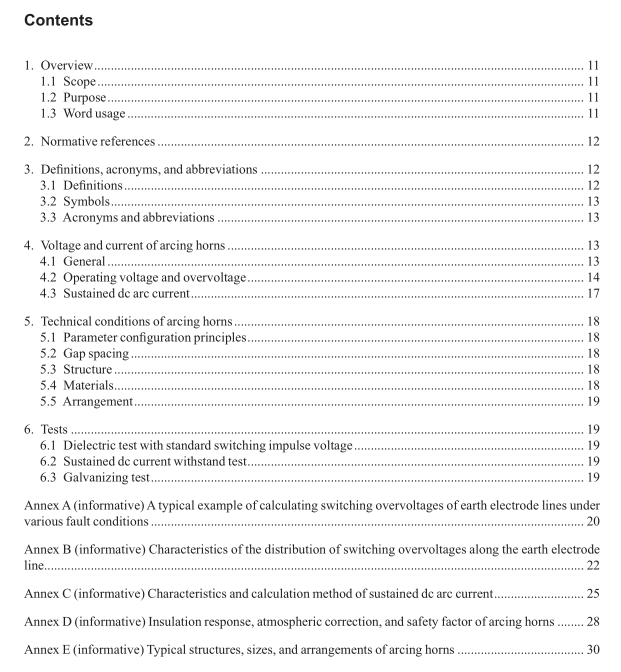
IEEE Std 2771 pdf download IEEE Guide for Parameter Confguraton of Arcing Horns of DC Earth Electrode Lines
1. Overview1.1 Scope
This guide indicates the configuration parameters for arcing horns of direct current (dc) earth electrode lines,including sustained dc arc current, composition,installation, and gap distance of arcing horns. This guideapplies to the configuration of arcing horns of dc earth electrode lines(hereafter referred to as arcing horns) fornew or reconstructed dc transmission projects.
1.2 Purpose
This guide indicates the dimension,installed position, and gap distance of arcing horns of earth electrodelines, and provides a criterion for the configuration of arcing horns of dc earth electrode lines, which increasesthe safety and stability of dc transmission systems.
1.3 Word usage
The word shall indicates mandatory requirements strictly to be followed in order to conform to the standardand from which no deviation is permitted (shall equals is required to).1.2
The word should indicates that among several possibilities one is recommended as particularly suitable,without mentioning or excluding others; or that a certain course of action is preferred but not necessarilyrequired (should equals is recommended that).
The word may is used to indicate a course of action permissible within the limits of the standard (may equalsis permitted to).
The word can is used for statements of possibility and capability, whether material, physical, or causal (canequals is able to).
2. Normative references
The following referenced documents are indispensable for the application of this document (i.e., they mustbe understood and used, so each referenced document is cited in text and its relationship to this document isexplained). For dated references, only the edition cited applies. For undated references, the latest edition of thereferenced document (including any amendments or corrigenda) applies.
IEEE Std 1899TM-2017,IEEE Guide for Establishing Basic Requirements for High-Voltage Direct-CurrentTransmission Protection and Control Equipment.3.4
IEC 60060-1:2010, High-Voltage Test Techniques—Part 1: General Definitions and Test Requirements.IEC 60071-2:2018,Insulation Co-ordination—Part 2: Application Guidelines.
IEC 60633:2019, Terminology for High-Voltage Direct Current (HVDC)Transmission.
IEC 61325:1995, Insulators for Overhead Lines with a Nominal Voltage above 1000 V—Ceramic or GlassInsulator Units for d.c.Systems—Definitions, Test methods and Acceptance Criteria.
3. Definitions, acronyms, and abbreviations
3.1 Definitions
For the purposes of this document, the following terms and definitions apply. The IEEE Standards DictionaryOnline should be consulted for terms not defined in this clause.
arcing horn: A lightning protection device connected in parallel with the insulators and generally composedof a high voltage side electrode, a grounding side electrode, and connection fittings. The gap distance of thearcing horn is less than the length of insulators, which can provide flashover path as well as transfer and guidethe arc.
earth electrode: Conducting elements placed in the earth or the sea,which provide a low resistance pathbetween a point in the dc circuit and the earth,and are capable of carrying continuous current for someextended period.(IEEE Std 1899TNM_2017).7
earth return: Operation mode in which the return current path between neutrals of the HVDC substations isthrough the earth.(IEC 60633:2019).
electrode line: Insulated line between the HVDC substation dc neutral bus and the earth electrode.(IEEE Std 1899-2017).Syn: earth electrode line.
HVDC transmission system: An HVDC system that transfers energy between two or more geographiclocations.(IEEE Std 1899-2017).
pole (current) balancing:Control action to balance the currents in the two poles of a bipole system, in orderto limit the differential current that flows between the neutrals of the high-voltage direct-current system.(IEEE Std 1899-2017).
3.2 Symbols
DR smoothing reactor arrester
E1 converter neutral arrester
E2 neutral bus arrester
EL electrode line arrester
EM metallic return arrester3.3 Acronyms and abbreviations
ac alternating current
dc direct current
ERTB earth return transfer breaker
HVDC high-voltage direct current
MRTB metallic return transfer breaker
4. Voltage and current of arcing horns
4.1 General
Voltage applied on arcing horns may be operating voltage, switching overvoltage, or lightning overvoltage. Voltage resulting in arcing horn breakdown is generally switching overvoltage and lightning overvoltage. Sustained dc arc current will occur on the arcing horn if the air gap of the arcing horn breaks down and the earth electrode line has large dc operating current. Sustained dc arc is difficult to extinguish naturally, which may cause the risk of insulator string falling apart, wire fracture, pole blocking, and other serious accidents.
